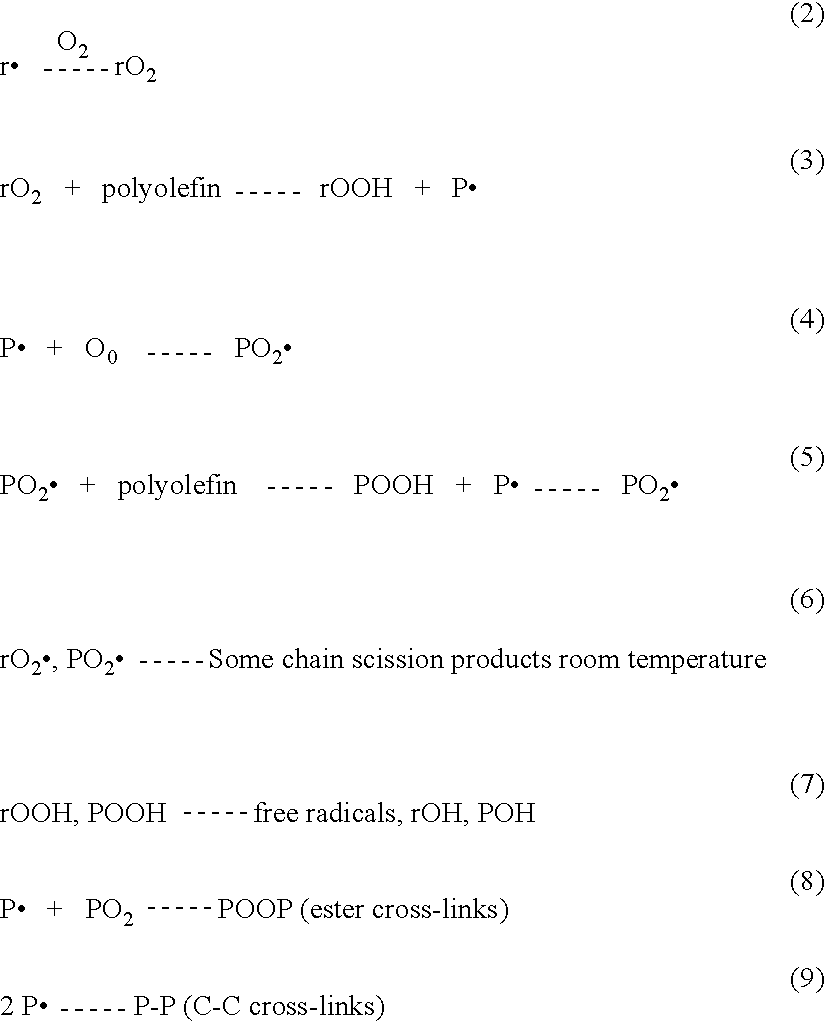Polyethylene cross-linked with an anthocyanin
a technology of polyethylene and anthocyanin, which is applied in the field of medical implants, can solve the problems of not employing stabilizers, antioxidants, or any other chemical compounds which may have potential, and achieve the effect of improving wear properties
- Summary
- Abstract
- Description
- Claims
- Application Information
AI Technical Summary
Benefits of technology
Problems solved by technology
Method used
Image
Examples
example
[0039]Gur 1020 brand UHMWPE powder per ASTM F 648 Type I was purchased from Ticona GmbH, FrankfurtMain, Germany. The partial size of the powder was less than 300 μm.
[0040]The anthocyanin Antho-G and Antho-B extracts were dissolved in water in a concentration of 2.5% and mixed into the UHMWPE powder using a Papenmeier shear blender. The amount of the 2.5% solution added to the UHMWPE powder was varied to produce either 500 ppm (0.05% w / w) or 250 ppm (0.025% w / w) of the antho-G extract or 250 or 125 ppm of the antho-B extract. The actual concentration of anthocyanin contained in each sample is shown in Table 1. After drying under nitrogen, the UHMWPE blend was then molded at 350° F. and with a maximum unit pressure of approximately 1000 psi (4 MPa) to produce a test sample plaque in a size of 2×3×6 inches.
[0041]The anthocyanin doped plaques were sequentially gamma irradiated 3 MRad for a total dose of 9 and annealed after each dose at 130° C. for 8 hours. Test samples (1 mm slices) we...
PUM
| Property | Measurement | Unit |
|---|---|---|
| Temperature | aaaaa | aaaaa |
| Fraction | aaaaa | aaaaa |
| Fraction | aaaaa | aaaaa |
Abstract
Description
Claims
Application Information
 Login to View More
Login to View More - R&D
- Intellectual Property
- Life Sciences
- Materials
- Tech Scout
- Unparalleled Data Quality
- Higher Quality Content
- 60% Fewer Hallucinations
Browse by: Latest US Patents, China's latest patents, Technical Efficacy Thesaurus, Application Domain, Technology Topic, Popular Technical Reports.
© 2025 PatSnap. All rights reserved.Legal|Privacy policy|Modern Slavery Act Transparency Statement|Sitemap|About US| Contact US: help@patsnap.com


